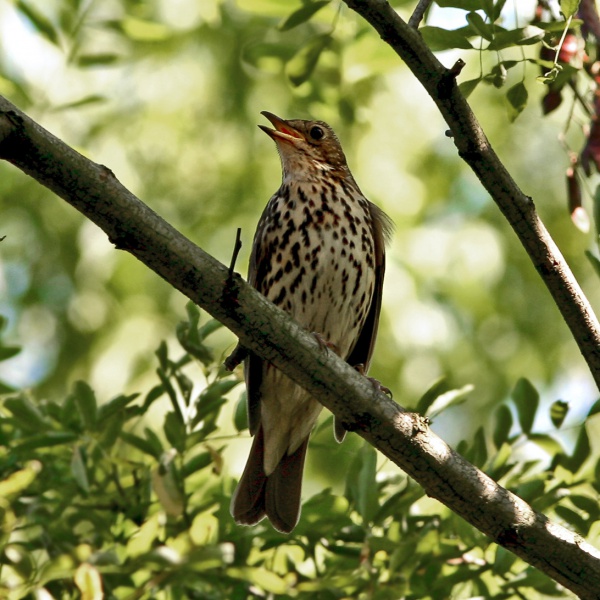Facts About Song thrush
The song thrush, scientifically known as Turdus philomelos, is a captivating bird found throughout the West Palearctic region. Its distinctive appearance, characterized by brown upperparts and cream or buff underparts speckled with black spots, makes it a familiar sight in forests, gardens, and parks. Many song thrushes migrate to warmer regions such as southern Europe, North Africa, and the Middle East during the colder months. Interestingly, they have also been introduced to New Zealand and Australia.
When it comes to nesting, song thrushes construct cup-shaped nests in bushes or trees and lay blue eggs decorated with dark spots. They are omnivorous and have a unique method of breaking open snail shells by using stones as anvils. However, their populations face threats from changes in farming practices, predators, and parasites.
The song thrush was first described by the German ornithologist Christian Ludwig Brehm in 1831. There are three recognized subspecies, with the predominant one covering most of its range. It is closely related to the mistle thrush and the Chinese thrush. One of the most enchanting aspects of the song thrush is its song, which features repeated musical phrases and has been celebrated in poetry.
These birds are widespread across Europe, with northern populations migrating south for the winter. In Great Britain, they are commonly found in areas with plenty of trees and bushes. The song thrush has also successfully established itself in New Zealand and Australia. They prefer forests with ample undergrowth for nesting but are adaptable enough to utilize gardens and parks as well. Unfortunately, changes in farming practices have affected their breeding habitats, leading to declines in some areas.
Song thrushes are monogamous and territorial. Some individuals migrate to the same wintering areas each year, traveling primarily at night in loose flocks. The female is responsible for building the nest and incubating the eggs on her own. Predators, parasites, and habitat changes are constant threats to their populations.
Their diet is varied, including invertebrates, earthworms, snails, and fruit. They are known for using stones to crack open snail shells. The song thrush's distinctive song and hunting skills have been immortalized in various poems and literary works. Despite some regional population declines due to agricultural changes, the song thrush is classified as "Least Concern" in terms of conservation status. They hold cultural significance in many contexts, even serving as symbols for sports teams and featuring in traditional practices such as trapping and aviculture.

 Ireland
Ireland